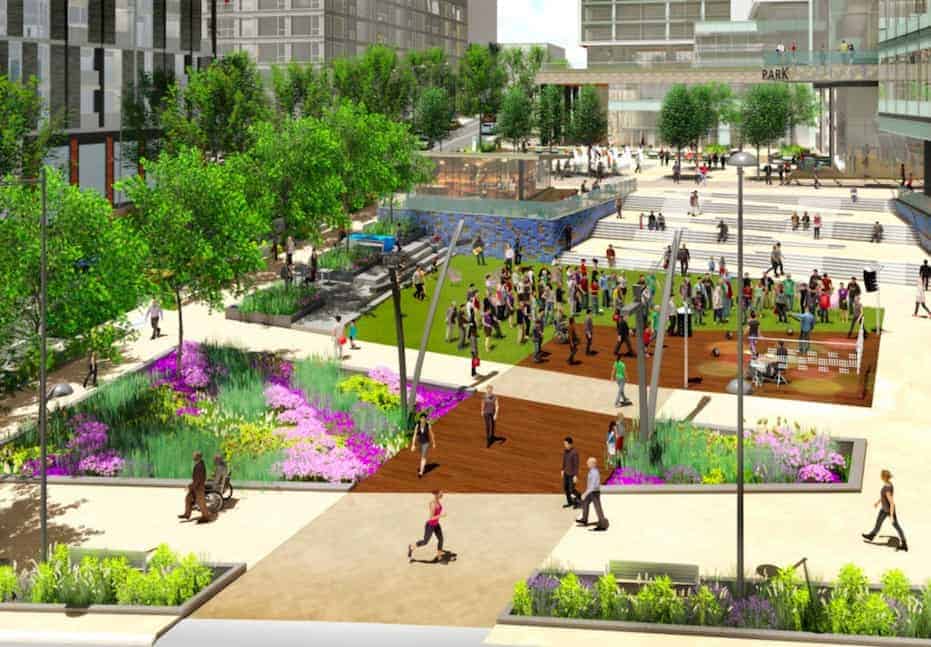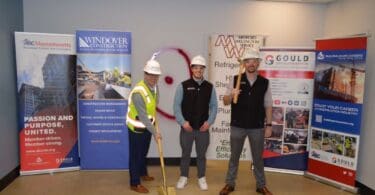by Stephanie Pankiewicz, ASLA, PLA
 While the term “pop-up park” is a new idea and millennial buzzword, the concept is proving to be much more than a fleeting novelty, according to LandDesign, the national expert in parks and public space. These instant open areas ready for public use and programming can accelerate real estate development, activate emerging neighborhoods, and support businesses and safe pedestrian zones.
While the term “pop-up park” is a new idea and millennial buzzword, the concept is proving to be much more than a fleeting novelty, according to LandDesign, the national expert in parks and public space. These instant open areas ready for public use and programming can accelerate real estate development, activate emerging neighborhoods, and support businesses and safe pedestrian zones.While the term is used in some circles to describe car-designated zones reclaimed for pedestrian use, today’s pop-up parks are diverse, creative and often a key to validating both (a) the need for more urban open space and (b) concept designs that test new ideas in public realm design, says Stephanie Pankiewicz, ASLA, PLA, a partner with LandDesign in Washington, D.C., which has completed pop-up parks in Charlotte, Orlando, and Tysons, Va.
 FLORIDA:
FLORIDA:New test cases include the pop-up recreation zone for Boxi Park, created from shipping containers and modern furnishings in the Orlando-area community of Lake Nona Town Center, injecting an instant community draw. The park is now helping build appeal around new multifamily and mixed-use developments there, billed as “a Central Florida hub for food and fun.” With restaurants, beach volleyball, bars and live entertainment, the pop-up adds high-visibility vitality to the 30,000-square-feet outdoor district, billed as dog-friendly and kid-friendly, too.
VIRGINIA:
Proving their impact on local growth is a recent pop-up park executed at The Boro in Tysons, an ambitious multiple-phase development uniting a vibrant community with a fun, recreation-oriented zone along a new Metrorail extension. The 10,000-square-foot “pop-up parklet” created a usable and magnetic zone during construction, drawing in neighbors to learn more about The Boro and Tyson’s rapid growth.
“People want flexible spaces, and developers and area businesses benefit by presenting an active, engaging public realm,” says Pankiewicz, who is currently working on 20-plus outdoor spaces in Tysons. “Pop-up parks can be a great way to test ideas, try new approaches, and see how people will use parks and plazas when they are fully built out.”
The future vision for Tysons, the new downtown of Fairfax County, has been described as “a high-density city with dynamic walkable streets, an iconic skyline and quality public spaces.” The success of the parklet validated the need for expanded public zones in the area.
 NORTH CAROLINA:
NORTH CAROLINA:At the future site of Bell Tower Green Park in Salisbury, N.C., a pop-up park served as a space for a community yoga class and event, hosted by a pair of LandDesign’s own designers. The event facilitated not only community engagement but also gave participants the chance to learn about future plans for the park—hailed as one of North Carolina’s premier downtown parks—and future activities to be hosted there.
For developers, pop-up parks and public programming can help inform longer-range design decisions, serving as testing for how to entertain people and activate plazas, esplanades, parks and open areas, as seen at The Boro or at the Bell Tower Green Park.
“When clients are investing in open space, programming is becoming increasingly important,” says Beth Poovey, PLA, who serves as the director of greenways, parks and open space at the Charlotte, N.C. office of LandDesign. “The ability to hold large programs like craft fairs and civic events, or temporary art installations — things that create the Instagram moments — can be accomplished and tested with pop-up parks. Rather than committing major project elements or fund outlays up front, it gives mayors, developers and other stakeholders a better feel for what the community wants — and what’s possible.”

Stephanie Pankiewicz
Stephanie Pankiewicz is a landscape architect and a partner at LandDesign.










